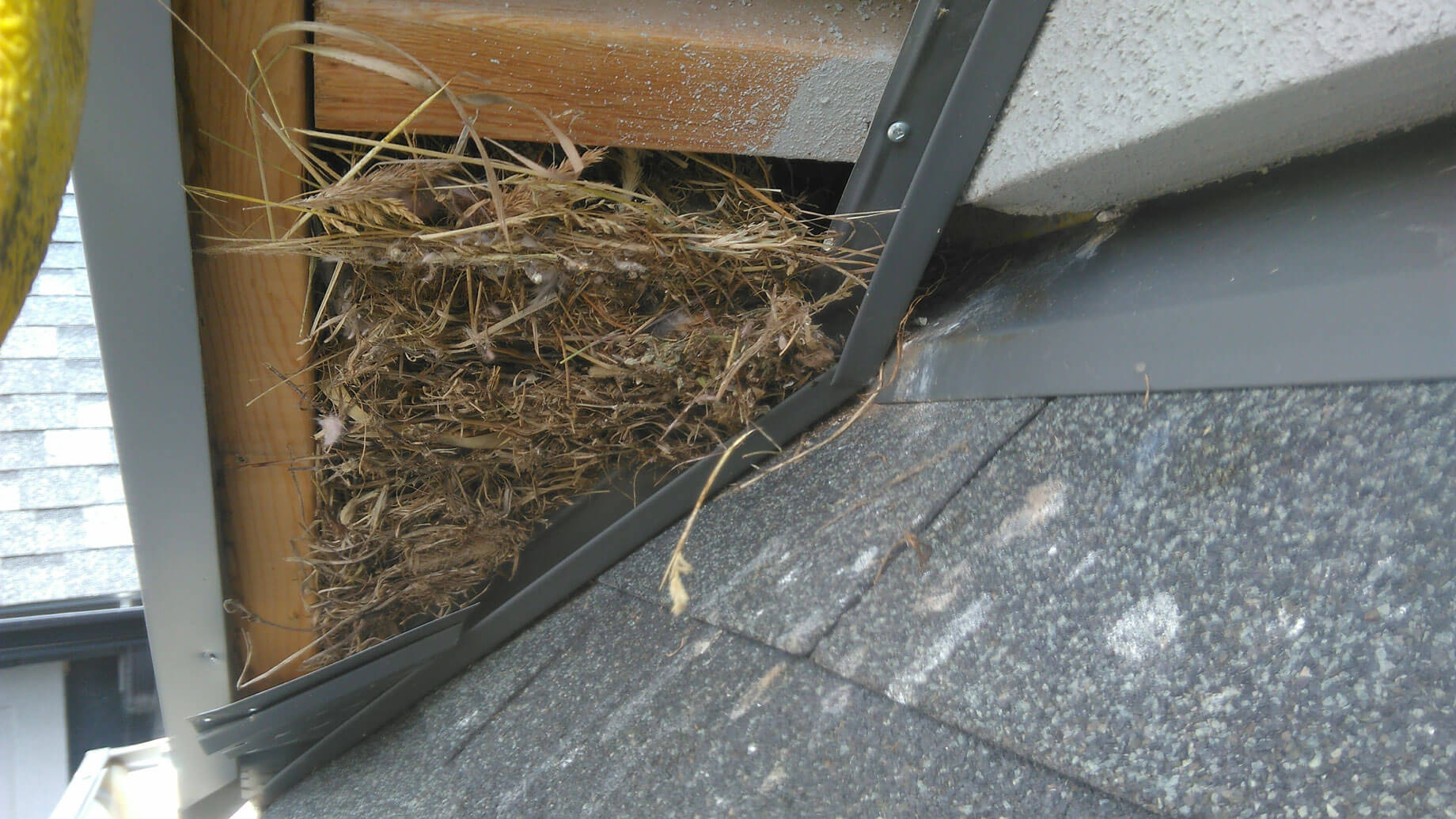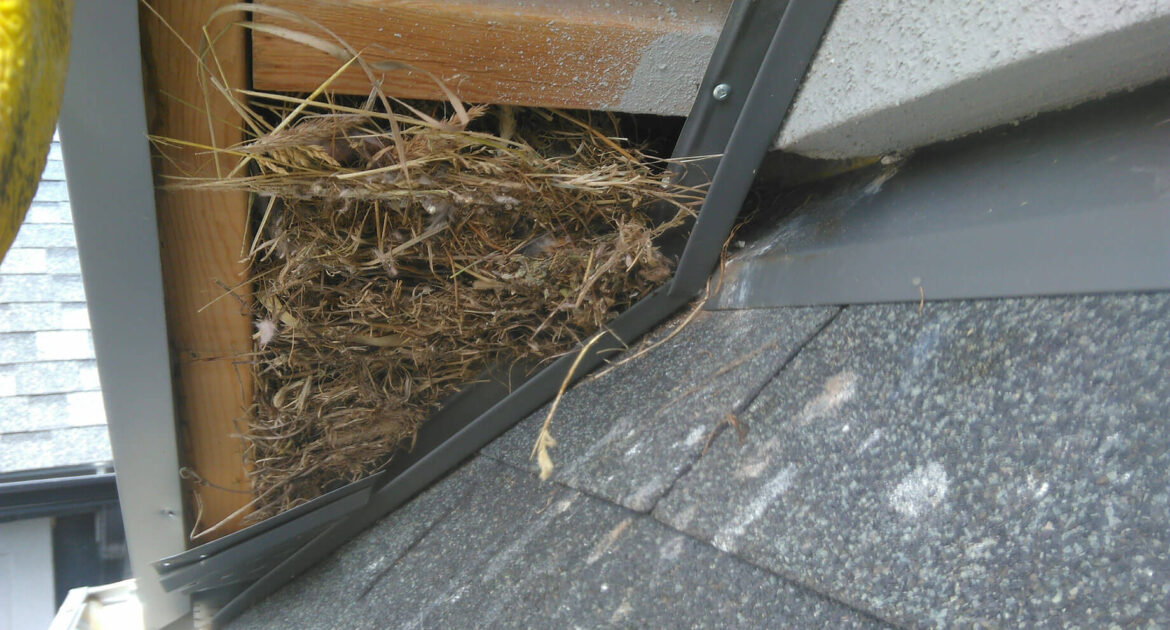Glossy black European Starlings with their purply greenish iridescent heads, backs, and breasts, are a common sight in Canada and can be found in both urban and rural areas. Southern Ontario is a winter hub for starlings and over 255,000 starlings stay in the Golden Horseshoe area. This is a mere fraction of the starling population that can be found in Canada in the warmer months. The best way to protect your Rexdale home from starlings is to use humane wildlife prevention techniques.
Starlings are native to Eurasia but since their introduction into New York in the 1890s they have spread across the United States, southward to Mexico and northward to the southern half of Canada. Starlings can easily adapt to living in different conditions and in areas of high human density. They are found in a wide variety of habitats, including cities, towns, farms, woodlands, fields, and lawns, and nest in holes or cavities almost anywhere.
Starlings are considered pests because of the problems they cause and the growing urbanization of flocks seeking warmth and shelter in the winter has serious consequences. Large roosts in buildings, industrial structures, and garden trees are problematic in urban areas because of health concerns, filth, noise and odor. To make matters worse, the slippery accumulation of droppings poses serious safety concerns. The corrosive effects of bird droppings can also cause irreversible damage to your property – defacing rooftops, walkways, walls, vehicles, and equipment.
Birds are known to carry over 60 transmissible diseases, including encephalitis, salmonella, meningitis, toxoplasmosis. One of the more serious health concerns related to starlings is the fungal respiratory disease histoplasmosis. The fungus Histoplasma capsulatum can grow in the soil underneath starling roosts and the spores can become airborne in dry weather, especially when the ground is disturbed. Although most cases of histoplasmosis are mild or even unnoticed, the disease can, in rare cases, cause blindness and even death. Bird mites can also be found swarming a starling and you do not want those crawling around your home.
Starlings also compete with native birds such as bluebirds, flickers, woodpeckers, purple martins, and wood ducks for nest sites, and where nest cavities were limited starlings have a severe impact on the population of native species.
Protect your home and business from a starling invasion
Wild birds cost individuals and businesses millions of dollars each year in clean-up expenses, repairs, and damage to equipment. Skedaddle Humane Wildlife Control has years of experience in providing humane wildlife prevention in Rexdale and here is our best advice.
- The key to successfully managing starlings is to stop the problem before it even starts. Industrial buildings and houses need to be well maintained and all openings that are larger than one inch need to be closed off with netting or hardware cloth. Wildlife exclusion sealant works well to seal cracks and crevices where small birds could gain access to attics and soffits. Large gaps or holes in walls need to be repaired as soon as possible as these provide excellent nesting sites for birds. Galvanized steel screening can be used to prevent birds gaining access to roof and wall vents. It is important to use screening that won’t rust and stain your property.
- Even if your property is well maintained, it still provides ample nesting sites for starlings. Awnings and overhangs are perfect spots and professionally installed bird netting is your best answer to the problem. The netting not only prevents the birds from nesting, but it also provides protection from droppings.Cleaning up after birds is a messy business and if there is an accumulation of bird droppings in your chimney, attic or storage shed, it’s best to call in the experts, like Skedaddle Humane Wildlife Control, to do deal with the problem.




